Industry News, trenchless people
 The Australasian Society for Trenchless Technology (ASTT) is offering the Cured-in-Place Pipe (CIPP) Good Practices Course in Hamilton, New Zealand prior to the start of the Water New Zealand Conference and Expo.
The Australasian Society for Trenchless Technology (ASTT) is offering the Cured-in-Place Pipe (CIPP) Good Practices Course in Hamilton, New Zealand prior to the start of the Water New Zealand Conference and Expo.
The course will be presented by expert in field, Chris Macey of AECOM in North America, and provides an in-depth overview of wastewater mainline and lateral pipe rehabilitation using CIPP and design to job completion.
Tuesday, September 18
8am – 5pm
Novotel Hamilton Tainui
7 Alma St
Hamilton, 3204
New Zealand
Course registration is NZ$530 for ASTT members and NZ$640 for non-members. (Please note, registration will be charged in AUD).
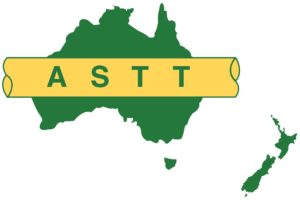 Visit the conference website for more details!
Visit the conference website for more details!
Industry News, trenchless people
Did you know Staheli Trenchless Consultants offers Specialized Construction Management?
 Joel Staheli is the head of our Construction Services Department. Along with our team of highly experienced inspectors, Joel has the ability to develop field inspection teams that are focused on ensuring a high-risk trenchless project is delivered in a safe and timely manner while meeting the intent of the design. Joel leads a team of inspectors that are dedicated to minimizing construction risk. This requires that each member of the Staheli Trenchless team be aware of the risks that were identified in design so they can be monitored, tracked, and approached in a fair manner throughout construction. He has experience with implementing the use of Geotechnical Baseline Reports in construction to settle disputes in a timely fashion before they become elevated to claims. His success with negotiating fair change orders comes from the high level of integrity that he maintains while communicating with a wide range of personalities.
Joel Staheli is the head of our Construction Services Department. Along with our team of highly experienced inspectors, Joel has the ability to develop field inspection teams that are focused on ensuring a high-risk trenchless project is delivered in a safe and timely manner while meeting the intent of the design. Joel leads a team of inspectors that are dedicated to minimizing construction risk. This requires that each member of the Staheli Trenchless team be aware of the risks that were identified in design so they can be monitored, tracked, and approached in a fair manner throughout construction. He has experience with implementing the use of Geotechnical Baseline Reports in construction to settle disputes in a timely fashion before they become elevated to claims. His success with negotiating fair change orders comes from the high level of integrity that he maintains while communicating with a wide range of personalities.
Prior to serving as the head of the Construction Services Department, Joel performed specialty construction inspection on a variety of challenging trenchless projects. He has vast experience with horizontal directional drilling, auger boring and pipe ramming, along with other trenchless construction methods. He is able to identify and prioritize risk and develop construction inspection strategies that ensure the Owner has the right information from which to evaluate potential change orders. Joel embraces a proactive approach to construction inspection services and performs time-in-motion studies during construction to evaluate performance on a real-time basis, allowing identification of potential problems. He has excellent communication skills that allow him to interact with the contractor in a productive manner while representing the Owner in a manner that is consistent with a well-planned risk management strategy. Joel is a firm believer in identifying and tracking trenchless risks throughout construction to ensure that the factors that contribute to successful completion of a trenchless project are effectively incorporated. Joel is straight forward and genuine. He works diligently toward positive resolution and resolves construction issues in a timely manner. If you call Joel – he will be sure to follow-up and get you the information you need.
Joel is a talented woodworker, loves all things sports, and loves the laughter and happy-chaos that comes with his family of 6.
Joel is stationed in our Lynnwood, Washington office, but is usually found onsite managing projects around the Pacific Northwest.
Staheli Trenchless Consultants (STC) is a specialty engineering firm that focuses on the reduction of trenchless risk through trenchless engineering services including feasibility studies, geotechnical investigations, design and bid services as well as construction management and inspection services. STC provides these services for projects which include microtunneling, horizontal directional drilling, guided boring, auger boring, pipe ramming, pipe bursting, EPB tunneling and in-place rehabilitation such as sliplining and CIPP. STC is a certified WBE in Washington and Oregon.
Industry News, trenchless products
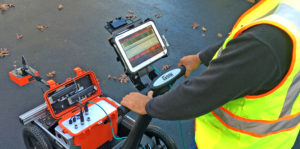 Challenge
Challenge
To bring their latest industry-leading Ground Penetrating Radar (GPR) systems to market, Geophysical Survey Systems Inc. (GSSI) needed a capable, flexible controller platform for use with their highly specialized devices. After years of operating with a custom controller that couldn’t always keep up with the fast pace of technology evolution, GSSI needed a solution that could support workers in the most challenging conditions and better withstand rigorous use.
Solution
After considering other players in the rugged computing market, GSSI decided to pair their GPR device with the Panasonic Toughpad FZ-G1 and Toughpad FZ-M1 tablets, which offer visibility, impressive battery life and best-in-class durability that holds up to the environmental challenges they face every day in the field.
 Result
Result
By deploying the Toughpad tablet, GSSI was able to create a partnership with a brand that has a similar reputation for being rugged enough for the toughest field environments. GSSI now offers customers a highly capable solution in a device that will last, eliminating fears of damage or replacement.
As manufacturers of the highest quality ground penetrating radar technology in the market, GSSI is an organization that understands the rigor of field work, and their customers operate in environments that are as tough as it gets. GSSI’s technology aids field work across industries, from construction sites to public utility work and even search and rescue missions following a natural disaster. Despite their reputation for industry leading software, they can’t do it alone. GSSI relied on a custom controller that was hardened for field work. While it met the unique hardware requirements for their ground penetrating radar (GPR) technology, the controller couldn’t keep up with the design cycle and the hardware too frequently became outdated. In a market that requires staying ahead of technological advancements, GSSI sought a new hardware partner to accompany their best-in-class software.
After investigating other options in the rugged tablet market, GSSI ultimately landed on Panasonic because they wanted a partner that had a similar reputation for being rugged and durable. With the assistance of their engineering team, the company purchased a fleet of both the Toughpad FZ-G1 and Toughpad FZ-M1 tablets and designed proprietary software for use with their GPR systems, creating a bundled full-suite package that offers customers full control over these complex, finely-tuned radar systems. A Toughbook customer for over 20 years, GSSI had experience with Toughbook laptops, but for this particular use case, GSSI decided a tablet form factor was the better fit. Lightweight and portable, the tablet doesn’t compromise on performance or screen size and offers portability and offers greater flexibility in the field.
Due to the uniquely challenging environment of their work, a rugged design was the first thing to come to mind for GSSI when considering new hardware. One of the key reasons for choosing Panasonic was simply that Toughbook and Toughpad products are known for holding up to the rigor of tough work conditions. In an environment where concrete is being cut, airborne dust poses a hazard and pleasant weather is never guaranteed, a commercial tablet simply wouldn’t suffice. GSSI needed a device that could withstand the varying conditions of this environment to seal out the elements, and the Toughpad was the right fit for the job. In addition to doing tough work, GSSI customers are known for being tough on their equipment. Operating in construction and safety zones, these devices might be tossed in the back of a truck, shipped around the world and dropped countless times. GSSI needed to ensure that a tablet-based system could endure how their employees handle the devices as much as the environment they work within.
Since GSSI customers primarily work in outdoors environments, visibility and battery life were other crucial features. Particularly in bright light conditions, commercial grade tablets get washed out and critical data is difficult to read on the screen. The ability to ensure visibility in all light conditions was another important aspect. GSSI was also attracted to the added battery life available with the Toughpad. Especially in emergency response and disaster recovery situations, device failure due to battery loss simply isn’t an option.
A result of two companies who pride themselves on serving workers in uniquely challenging environments, this solution will support GSSI customers though whatever conditions they face today, tomorrow and for another 20 years. Panasonic Toughpad was the right choice for GSSI for several reasons, but the main one is clear: it’s built to last.
Industry News, trenchless projects
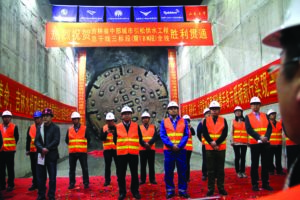 Hard Rock Machine crosses Finish Line Nearly Five Months Ahead of Schedule
Hard Rock Machine crosses Finish Line Nearly Five Months Ahead of Schedule
In mid-May 2018 the national-record-setting 7.9 m (26 ft) Robbins Main Beam TBM at the Jilin Lot 3 Tunnel broke through. A formal ceremony followed to commemorate the stellar performance of the tunneling operation and its early completion. “I have participated in this project from the beginning. The project broke through 147 days earlier than scheduled. The project has achieved the fastest monthly advance rate record–1423.5 m/4,670 ft—for 7 to 8 m (23 to 26 ft) diameter TBMs in China. And the machine has reached over 1000 m (3,280 ft) per month for three consecutive months. I am so proud of these achievements,” said Mr. Wu Zhi Yong, Vice Chief Engineer and Jilin Yinsong Project Vice General Manager for contractor Beijing Vibroflotation Engineering Co. Ltd. (BVEC).
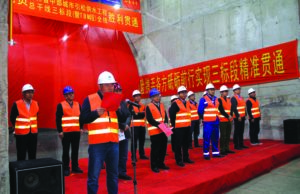 The completion of the 24.3 km (15 mi) tunnel nearly five months ahead of schedule is a monumental achievement considering the difficult ground conditions encountered. Rock types ranged from tuff to granite, sandstone, and andesite with multiple fault zones—conditions requiring nearly continuous ground support. Rock strengths varied widely from 35 to 206 MPa UCS (5,100 to 30,000 psi). The contractor cited a number of factors that contributed to the swift advance rates: “It is the stable and reliable performance of the Robbins machine, and the professional technical skills of the service technicians. The Robbins crew coordination, reasonable working progress arrangements and the sophisticated technology all allowed the project to make the fast advance rate,” said Mr. Wu.
The completion of the 24.3 km (15 mi) tunnel nearly five months ahead of schedule is a monumental achievement considering the difficult ground conditions encountered. Rock types ranged from tuff to granite, sandstone, and andesite with multiple fault zones—conditions requiring nearly continuous ground support. Rock strengths varied widely from 35 to 206 MPa UCS (5,100 to 30,000 psi). The contractor cited a number of factors that contributed to the swift advance rates: “It is the stable and reliable performance of the Robbins machine, and the professional technical skills of the service technicians. The Robbins crew coordination, reasonable working progress arrangements and the sophisticated technology all allowed the project to make the fast advance rate,” said Mr. Wu.
The Robbins Main Beam TBM bored through a total of 24 fault zones utilizing a unique combination of steel McNally slats (extruded through pockets in the TBM roof shield to prevent movement of loose rock), wire mesh, and shotcrete. The TBM was specifically designed to tackle the tough conditions. “Under the variable ground conditions, especially weak, soft, and fractured rock, the optimized system and reasonable design of the machine ensured effective tunneling progress. Robbins’ unique gripper system, continuous propel system, hydraulic drives, roof support and stable cutterhead reduced the wear of cutters.The efficient belt conveyor inside the main beam allowed quick muck removal from the cutterhead to the back of the machine, which ensured the good progress of the TBM,” said Mr. Wu.
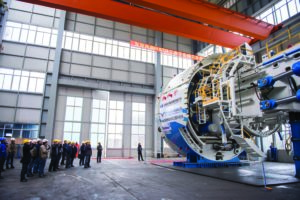 The Jilin Lot 3 tunnel is part of the Jilin Yinsong Water Supply Project, which at 736.3 km (457.5 mi) is China’s largest scale water diversion project to date. Once operational the water lines will divert the water from Fengman Reservoir at the upper reaches of Di’er Songhua River to central regions of Jilin Province experiencing chronic water shortages. These regions include the cities of Changchun and Siping, eight surrounding counties, and 26 villages and towns under their jurisdiction. The project will optimize water resource distribution, improve regional eco-systems, and ensure better food production and water safety for the people of Jilin Province.
The Jilin Lot 3 tunnel is part of the Jilin Yinsong Water Supply Project, which at 736.3 km (457.5 mi) is China’s largest scale water diversion project to date. Once operational the water lines will divert the water from Fengman Reservoir at the upper reaches of Di’er Songhua River to central regions of Jilin Province experiencing chronic water shortages. These regions include the cities of Changchun and Siping, eight surrounding counties, and 26 villages and towns under their jurisdiction. The project will optimize water resource distribution, improve regional eco-systems, and ensure better food production and water safety for the people of Jilin Province.
Image 1: The record-setting Robbins TBM broke through nearly five months ahead of schedule on China’s Jilin Lot 3 Tunnel.
Image 2: A formal ceremony revealed the Robbins Main Beam TBM during its final breakthrough in mid-May 2018.
Image 3: The 7.9 m (26 ft) diameter Robbins Main Beam TBM overcame 24 fault zones and difficult variable rock conditions to achieve a national record of 1,423.5 m (4,670 ft) in one month.
Industry News, trenchless projects
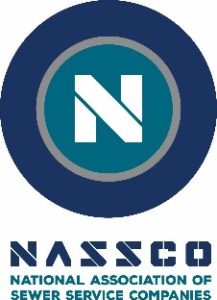 Trenchless Technology Center at Louisiana Tech University Awarded Project to Measure Styrene and Other Compounds to Capture Variation in Emissions During Pipe Rehabilitation Using the Cured‐In‐Place Pipe (CIPP) Method
Trenchless Technology Center at Louisiana Tech University Awarded Project to Measure Styrene and Other Compounds to Capture Variation in Emissions During Pipe Rehabilitation Using the Cured‐In‐Place Pipe (CIPP) Method
(Marriottsville, Maryland, June 15, 2018) – After a careful and thorough review of multiple responses to a request for proposal to provide a comprehensive evaluation of air emissions from steam-cured cured-in-place pipe (CIPP) installations and potential impacts on workers and the surrounding community, NASSCO today announces their award of the research project to the Trenchless Technology Center (TTC) at Louisiana Tech University.
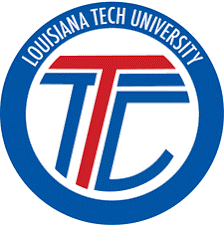 The project is Phase 2 of a larger study and calls for measurement of styrene and other organic compounds at six CIPP installation sites, representing different pipe diameters (8”, 12”, and larger), and lengths, in order to capture variation in emissions. Measurements will be conducted before, during, and after curing at the termination manhole, as well as various locations in the surrounding outside area and inside nearby buildings. Worker exposure will also be measured via personal exposure monitors. Finally, dispersion modeling will be conducted to estimate compound concentrations at a large number of locations for a wide variety of meteorological conditions. Measured and modeled concentrations will be compared to appropriate health-based action levels to determine if any potential health risks exist for workers or citizens in the surrounding communities.
The project is Phase 2 of a larger study and calls for measurement of styrene and other organic compounds at six CIPP installation sites, representing different pipe diameters (8”, 12”, and larger), and lengths, in order to capture variation in emissions. Measurements will be conducted before, during, and after curing at the termination manhole, as well as various locations in the surrounding outside area and inside nearby buildings. Worker exposure will also be measured via personal exposure monitors. Finally, dispersion modeling will be conducted to estimate compound concentrations at a large number of locations for a wide variety of meteorological conditions. Measured and modeled concentrations will be compared to appropriate health-based action levels to determine if any potential health risks exist for workers or citizens in the surrounding communities.
Phase 1 was a four-month study on the review of published literature pertaining to chemical emissions during CIPP installations using styrene-based resins. The study, completed on April 6, 2018 by researchers at the University of Texas at Arlington (UTA)’s Center for Underground Infrastructure Research and Education (CUIRE), and the Institute for Underground Infrastructure (IKT) in Germany, found that existing studies do not adequately capture worker exposures or levels in the surrounding areas to which workers or citizens may be exposed. The team further determined that spatial variation of concentrations, and variations in concentrations with different meteorological conditions, are not well determined.
Late last year NASSCO formed a workgroup consisting of industry leaders to develop the requests for proposal for both Phase 1 and 2 and to select from the multiple responses to ensure the highest levels of integrity in the final selections. “As the NASTT representative on the workgroup for the CIPP Emission Testing project, I am delighted with the selection of TTC as the most meritorious candidate for this important research,” said Mike Wilmets, NASTT Executive Director. “For nearly 30 years, TTC has contributed novel and significant work to further the advancement of the trenchless industry. This will be an exciting assignment with definitive results and will undoubtedly have a far-reaching impact on worksite safety.”
As NASSCO’s new Executive Director, Sheila Joy shares the critical need to partner with other industry organizations for important initiative such as this. “One of my top priorities is to join forces with associations and organizations such as NASTT, WRc, WEF, NUCA and others so that we may have a unified voice and serve our industry to the best of our ability. We all share the same goal when it comes to the safety of our workers and communities, and this study is a perfect example of how unification will reveal the information we need to make smarter decisions for our industry as a whole.”
For questions or additional information, please contact NASSCO at 410-442-7473 or visit nassco.org.
Industry News, trenchless products
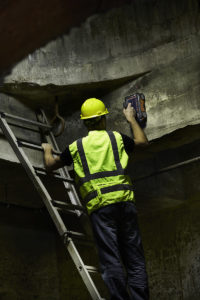 GSSI, the world’s leading manufacturer of ground penetrating radar (GPR) equipment, announces the new StructureScan™ Mini LT – the latest member of GSSI’s popular all-in-one concrete inspection GPR systems. With all the capabilities of previous versions of the StructureScan Mini, the new StructureScan Mini LT features a lower price point that makes it even more affordable.
GSSI, the world’s leading manufacturer of ground penetrating radar (GPR) equipment, announces the new StructureScan™ Mini LT – the latest member of GSSI’s popular all-in-one concrete inspection GPR systems. With all the capabilities of previous versions of the StructureScan Mini, the new StructureScan Mini LT features a lower price point that makes it even more affordable.
Rugged, compact, and flexible, StructureScan Mini LT is ideal for locating rebar, conduits, post-tension cables, and voids. It can help identify structural elements, including pan deck and concrete cover, and can also provide real time determination of concrete slab thickness. StructureScan Mini LT is the perfect entry-level concrete inspection system, and backed by a two-year warranty.
The integrated all-in-one concrete inspection tool comes with an antenna, positioning system, and control unit combination. It features an easy-to-use interface and six-button control options. With its 1.6 GHz antenna, the StructureScan Mini LT offers superior target resolution, reaching depths of 20 inches (50 centimeters).
Featuring a rugged and compact design, StructureScan Mini LT is IP 65-rated to withstand a jobsite’s toughest conditions. Users get first-in-class data visualization with a high-resolution 5.7-inch full color display with an easy user interface and different operation modes tailored for beginner to advanced use. The StructureScan Mini LT also makes it easy to customize the data display with a variety of color adjustments. Real-time migrated data, onscreen reference markers and multiple display modes are also available. Other useful features include an ergonomic handle, positioning lasers, and 4-wheel drive.
About GSSI
Geophysical Survey Systems, Inc. is the world leader in the development, manufacture, and sale of ground penetrating radar (GPR) equipment, primarily for the concrete inspection, utility mapping and locating, road and bridge deck evaluation, geophysics, and archaeology markets. Our equipment is used all over the world to explore the subsurface of the earth and to inspect infrastructure systems non-destructively. GSSI created the first commercial GPR system over 45 years ago and continues to provide the widest range and highest quality GPR equipment available today.
 The Australasian Society for Trenchless Technology (ASTT) is offering the Cured-in-Place Pipe (CIPP) Good Practices Course in Hamilton, New Zealand prior to the start of the Water New Zealand Conference and Expo.
The Australasian Society for Trenchless Technology (ASTT) is offering the Cured-in-Place Pipe (CIPP) Good Practices Course in Hamilton, New Zealand prior to the start of the Water New Zealand Conference and Expo. Visit the conference website for more details!
Visit the conference website for more details!








